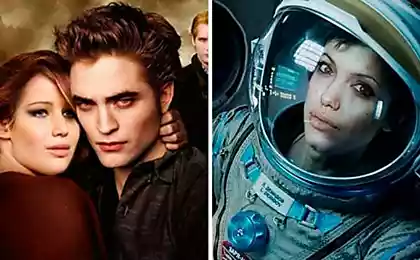546
Future ruins, Richard Castelli on the role of time in architecture

Appreciating the beauty of the architectural space, we often forget about the "fourth dimension". Chief curator of the "Archstoyanie-2014" Richard Castelli told T&P how to use time as a means of artistic expression, as not to lose the charm of the era with the restoration of the architect and why it is useful to present how you will see the ruins of the designed building.
Underestimation of time in architecture — a big omission. In my opinion, there needs to be some sort of drama. Initially, we discover the building. We may be able to see it from afar — if not located in densely built-up area. Then we are approaching architectural space inside, appreciate it. The building takes time to fully open: during the day, changing the atmosphere, the weather and lighting, and in its appearance and occur more significant changes. Personal architect Hitler albert Speer built their buildings, thinking about how will look their ruins in the future. He showed the Fuhrer just two building models: next to this model was surrounded by a hypothetical model in ruins. At that time it was assumed that the era of the Third Reich will last a thousand years.
Projects Of Albert Speer
This case radical enough. Another example is that he designed the building of the office, a very long building directly above the entrance was located in the office of Hitler. All visitors had to pass through the corridor the whole length of the building and then climb the monumental staircase and again to go through a long corridor to get to his office. This long path was conceived in order to have visitors there was a sense of the importance of this visit in accordance with the time taken to see the Chancellor. These ideas were much more interesting than the architecture of the building — it was, frankly, rather banal.
"I'm sorry that in Russia most of the work of Melnikov and constructivists fell into disrepair or have been destroyed"
For an architect it is important to think about how the building will move visitors would look like in different lighting and in different weather — in short, all the potential interactions that will make the object alive. There is nothing wrong with the building would meet the classic criteria: is durable, useful and beautiful. But modernity adds a new parameter to evaluate the plasticity and the ability to change depending on the context. Today, the building can perform different functions — as for one day, and during the whole period of existence.
The American pavilion at the Montreal exhibition, architect — Buckminster fuller
There are many architectural sites that I would like to save in time. One of them is the American pavilion at Expo 67 in Montreal, built by Buckminster fuller. I had the chance to see him later that night. It was already after he was burned, but before it began a controversial renovation and transformation into a Museum of the biosphere. It was incredible, just a cosmic experience. The Museum was much better without this shameful reconstruction. Belgium made the same mistake with its Atomium, trying too carelessly to update it, and it is very annoying.
When I visited the circular Kinopanorama in Moscow, I was told that the interior will also undergo reconstruction. The space reminded me of a kind of time machine, and this feeling was shared by the visitors. I would suggest to build another panorama next to me with all the new opportunities provided by modern technology. This new Kinopanorama might plastically adapt to the times, and I would have left as the embodiment of pure poetry. Such a solution would cost much less than trying to upgrade the old building.
Circular Kinopanorama in Moscow
I like the idea of the Japanese temples which are rebuilt every 20 years in the city of ISA, and every 30 and 60 years in Izumo. The new temple was built next to the previous one, which gradually decay and provide a space for the following churches who will replace them through the decades. Paradoxically, this helps to keep the old craft: it is difficult to maintain the ancient building is in good condition, if you do not possess the craft of the era when this building was built. Often in this case you have to combine archaeology and craft. During the construction of Japanese temples, old and new generation can communicate and pass knowledge to each other.
I am sorry that in Russia most of the work of Melnikov and constructivists fell into disrepair or have been destroyed. Cycles of love and hate to the heritage of the preceding era is fairly typical in the history of art, architecture and furniture. It is important that the best works have survived. Anyway, the idea has arisen not so long ago — a large part of the missing masterpieces of the Roman Empire and the middle Ages was demolished on the stones by people who needed to build their new home.
To talk about national culture, we need to define what we mean by a nation — especially in the case of the Russian Federation, which has undergone many changes in the last century and more recently. I can't believe that people who live in Moscow and near the border of Kazakhstan and Mongolia, share a common and universal culture of the Russian Federation. In this case, I'm certainly not talking about the Russian Diaspora. Culture should no longer for geography and today people from Japan may have more in common with a European than with another resident of his district or even his family. On this subject I would advise you to read a very easy and accurate book from a Nobel laureate in Economics Amartya sen "Identity and violence".
Source: theoryandpractice.ru
How to determine the acidity of the soil at the site
"The crying boy" what's the picture of Bruno Amadio























